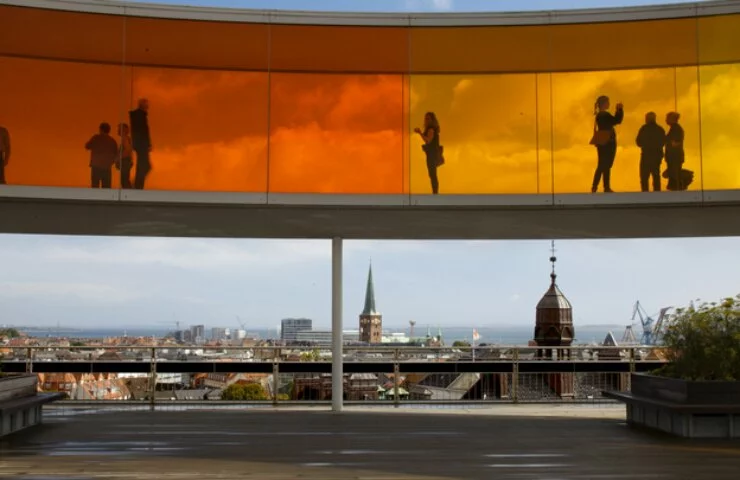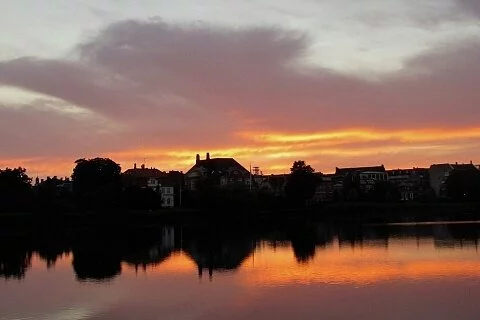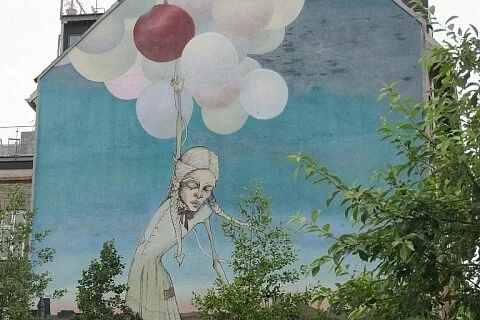Magnus Meyer has something most of us will never get.
The 21-year-old lives in Aarhus, the second-largest city in the happiest country in the world. Out of all the 45 joyous cities that make up Denmark, Aarhus is the happiest of happy, making it onto Reader’s Digest’s top four list.
According to the Reader’s Digest study, it is the quality of life which keeps the 300,000 inhabitants so content. “The residents of Aarhus cheerfully part with 68% of their income in taxes, knowing that in return they will be guaranteed free healthcare, free daycare, and a topnotch education for their children,” said the article.
It’s safe to say that Magnus has no complaints about his hometown being on the list – and in the headlines of most travel supplements ever since. Having lived there his entire life, he has so far resisted the allure of bigger cities or warmer climes.
“I’ve been considering moving to Copenhagen or Lund, but Aarhus is really nice so I’ve stayed so far,” Magnus explained, adding: “People are really laid back here and friendly.”
People aren’t the only anchor for Magnus, who listed the culture and university, a beautiful coastline, concert halls, forests just outside of the city and a multicultural student population as the biggest draws.
Nowhere else he’d rather live: Magnus Meyer. Photo by Lloyd Revald.
For some, the combination would surely sound too good to be true, but the Danes, who are nothing if not modest, seem to have taken the coveted placement in their stride.
Eager to find out how – if at all – being in the spotlight had changed the city, I spoke with Aarhus-based journalist, Martin Ljung Krabbe, who was unaware, though not entirely surprised by the news that his hometown of the last 10 years had come out on top.
“I hadn’t heard it,” he admitted. “Sometimes you have an idea about something and wonder, ‘Did I dream it?’ You live your life and it’s your own life and you have a sense of community but in the northern part of Europe – especially compared to the southern part, we are very privileged.”
Realistic enough to admit that mental health issues exist everywhere, Martin pointed out that psychiatrists and healthcare may be expensive but a welfare society means that no one in Aarhus goes ignored.
“I really like the city,” he said.
“It’s had a social democratic government. Denmark is known as a welfare society and this is one of the places with the most welfare.”
Like Magnus, the combination of water and nature has also made a strong impression on Martin. Although he has some reservations about Denmark as a whole, Martin is pleased by the direction that Aarhus has moved in.
“In my 10 years here, I think the municipality has become more open and modern in its way of approaching citizens and making the city for everyone,” he said.
A mixture of his children, work and education has kept Martin in Aarhus.
“Copenhagen is too big for me,” he said.
“They call Aarhus the biggest village in the world. Copenhagen is the other way around: the smallest capital in the world. It’s too big and too crowded.”
For fellow resident, Mette Bygebjerg Petersen, size is also an appealing factor
“Everything is within close distance,” she said.
“I live close to great shopping and great restaurants but also, only a 15-minute walk from my home I can take a walk along the shoreline out into the forest.”
Nature and history: Moesgaard Museum. Photo by Kim Wyon, courtesy of VisitDenmark.
WHAT TO SEE AND DO IN AARHUS
It seems to be unanimously agreed that nature is not to be missed in Aarhus, but what if it rains? (This is Scandinavia, after all). Below are some of the city’s popular attractions:
ARoS Aarhus Art Museum
If you make the trip to the happy city, you can’t not step into its very own rainbow, can you? On the roof of the famous art gallery it’s possible – nay, essential, to walk through Olafur Eliasson’s 150-metre long “Your Rainbow Panorama” and see the city through all coloured glasses.
The Botanical Garden
This green oasis is open all year round and located close to the Old Town.
The Ole Rømer Observatory
Who doesn’t fancy a bit of star-gazing? Just south of Aarhus in Højbjerg, the observatory is open 15 nights a month from September through to April.
Moesgaard Museum
Worth visiting for its architecture alone, Moesgaard’s exhibitions are a real insight into humanity and where we originated from. If you’re a misanthrope, it’s still recommended for the views of the surrounding nature. Free admission for those under 18.





Leave a Reply